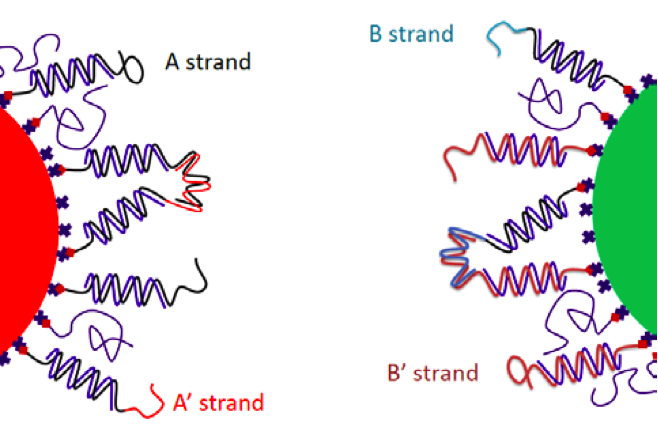Dr Erika Eiser (Biological and Soft Systems) and Prof Clare Grey (Department of Chemistry)

Many materials of technological relevance rely on controlled porosity to achieve function. These include ceramics, biological systems (e.g. bones), foods, dye-sensitive solar (Graetzel) cells, filtering units, super-capacitors and many other systems. One of the challenges is to tune the porosity on various length-scales and the composition, which is often limited to rather small parameter ranges. By using the specific binding properties of DNA end-grafted to colloids we have shown that it is possible to do precisely that: we can tune the porosity of a colloidal gel and we can, for the first time, prepare intercalating colloidal gels [1]. These results open up new avenues for exploration in the energy area, which we will explore with this award. Specifically, we shall extend our approach to different colloidal materials with varying sizes in order to build (1) photonic amorphous systems and (2) new types of lithium-ion battery electrode structures.
[1] F Varrato, L DI Michele, M Belushkin, N Dorsaz, SH Nathan, E Eiser, G Foffi, PNAS, early edition doi: 10.1073/pnas.1214971109 (2012).
Project Completed end of September 2014
Over the past year Mr. Zachary Ruff, Winton scholar, has utilized protocols from literature and developed them further to effectively attach DNA chemically to both gold nano-colloids, viruses, and very recently to carboxylated silica beads. This new knowledge provided us with three important design properties. (1) The chemical attachment of DNA is via a strong covalent bond, making the gel-formation robust over a wide temperature range. (2) We can now explore a wider range of materials, each providing different physical and chemical properties. (3) The grafted DNA layer screens the non-specific interactions due to Coulomb and van der Waals forces, and thus provides always the same short-range hybridization attraction provided by its specific sequence. Hence, colloids made of very different materials can be bound together at will, even if they would otherwise not mix. This is of great importance when combining the material properties of different materials in a complex hierarchical structure. The project has led to a number of publications and work will continue with Mr Ruff with additional support from resulting grants including the European ETN network COLLDENSE, in which Dr Eiser is the University of Cambridge node coordinator.

